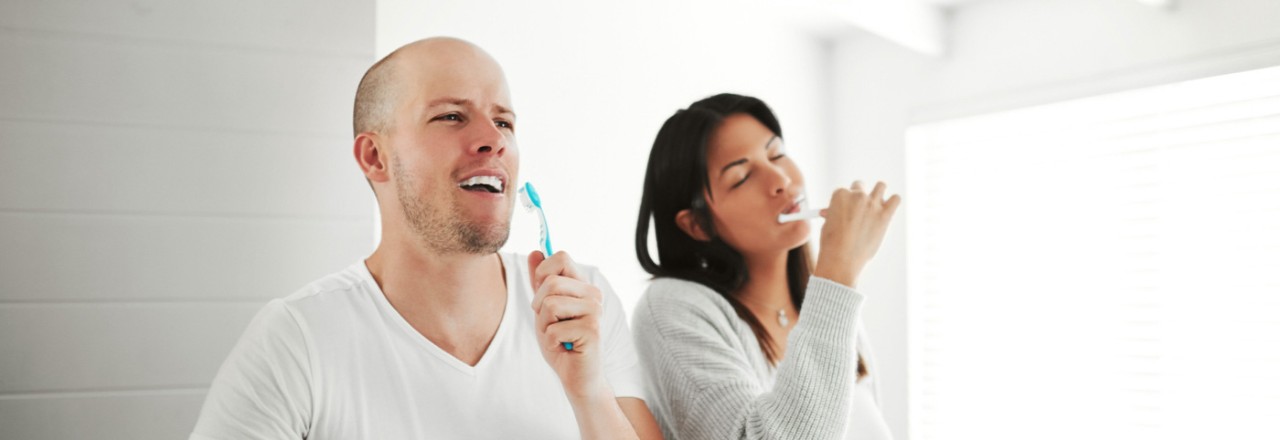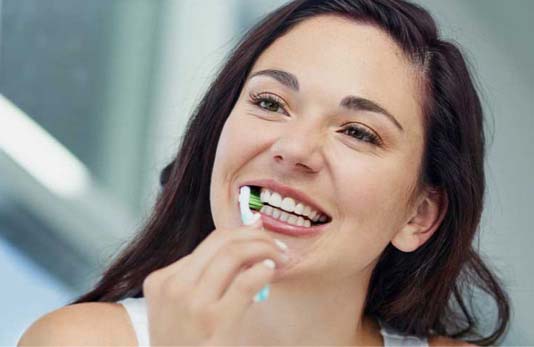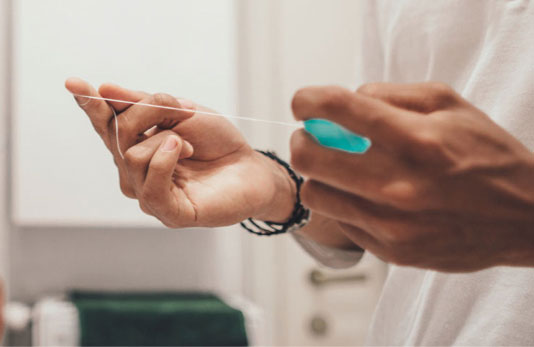Brush up on brushing and flossing techniques

Brushing and flossing are important parts of your daily routine. But to get the most benefit, you have to do it correctly.
Assemble your tools:
- An easy-to-wield toothbrush with soft, rounded bristles. Replace when the bristles are worn — about every two months.
- Toothpaste containing fluoride.
- Any kind of floss is fine; holders, picks or sticks can help. (Tip: If you don’t have a floss holder and have trouble holding on, try making a loop of floss by tying the ends of a 10-inch strand together.)
7 steps for better brushing
- Place your toothbrush bristles at a 45-degree angle to the gumline.
- Use just enough pressure to feel bristles against your gums and between teeth. (Don’t squish the bristles.)
- Brush all inner and outer tooth surfaces several times, using short, circular strokes and a scrubbing motion. Be sure to brush along the gumline as well.
- Brush chewing surfaces straight on. Clean the inside surfaces of front teeth by tilting the brush vertically and making up-and-down strokes with the front of the brush.
- Your toothbrush can only clean one or two teeth at a time. Move your brush frequently to reach every tooth and make sure you brush for two minutes.
- Watch yourself in the mirror to make sure no tooth is left behind.
- After brushing teeth, remember to brush your tongue. Oral bacteria can remain in taste buds.
5 steps for fabulous flossing
- Start with 18 inches of floss. Wind most of it around one of your middle fingers and the rest around the same finger on your other hand.
- Hold floss tightly with about 1 inch of floss between your hands. Glide floss between teeth with a gentle sawing motion.
- You’ll feel resistance when the floss reaches your gumline. Gently curve it into a C against your tooth.
- Hold the floss against each tooth, gently scraping the tooth’s side while moving the floss away from the gum. Repeat on all teeth. (Don’t forget the very back ones.)

Rinse to refresh
Once you’ve finished brushing and flossing, rinse your mouth vigorously with mouthwash to remove any loosened plaque and food particles. Some mouthwashes are helpful in treating or controlling plaque buildup, gum disease, bad breath and tooth decay!

When it comes to preventive care, there’s no bad time to dive in. Dentists recommend brushing at least twice a day and flossing at least once. Consider adding extra sessions after high-carbohydrate or sugary meals.
In addition to brushing and flossing, regular dental cleanings are an important part of maintaining your oral and overall health. Call your dentist today to schedule an appointment!
Last updated March 31, 2022
Related articles:
The oral health information on this website is intended for educational purposes only. Always consult a licensed dentist or other qualified health care professional for any questions concerning your oral health.


